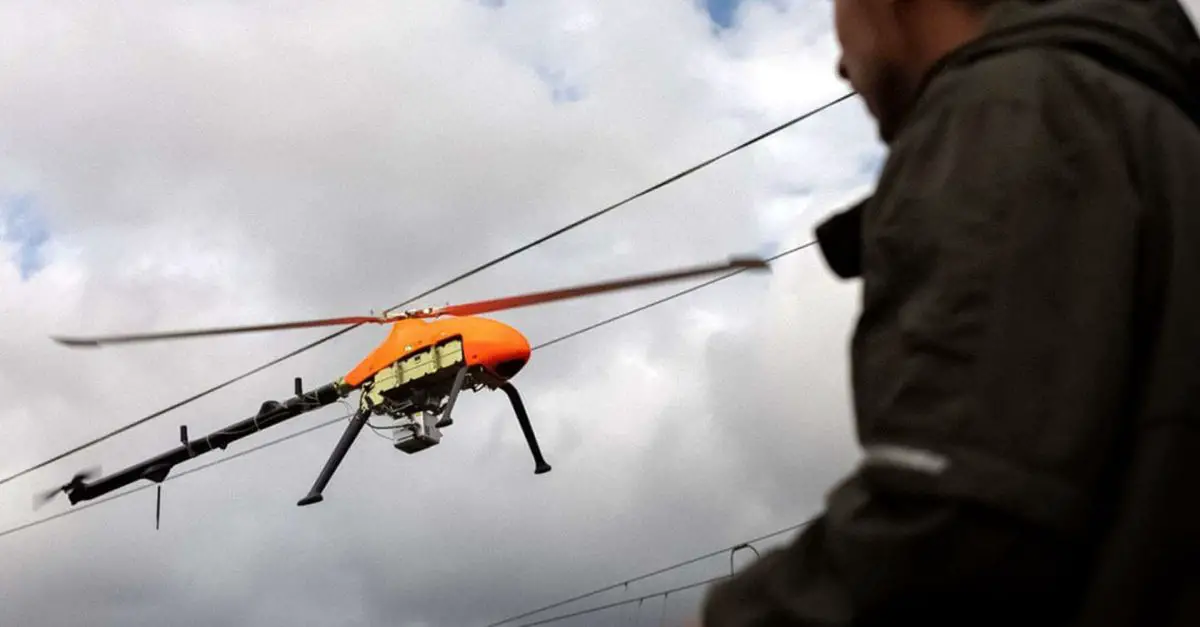Breaking news
Russia Implements Surveillance Project Using Alpha-E Aerial Drone.
On June 4, 2024, Kalashnikov successfully completed a pilot project in Bashkiria using the Alpha-E drone for comprehensive terrain imaging. This project employed various payloads for the benefit of a collective client.
Follow Army Recognition on Google News at this link

Kalashnikov tests the Alpha-E drone for a comprehensive terrain imaging project. (Picture source: Kalashnikov)
Kalashnikov successfully conducted this pilot project, using the 'Alpha-E drone for complete terrain imaging, integrating various payloads for the benefit of a collective client. One can easily imagine the different applications of this project, particularly from a military perspective.
"Thanks to its versatile payloads, we obtained deeper and more comprehensive information, suitable for seamless analytical processing, on objects in the surveillance area," commented a company representative.
Preliminary data suggests that the Republic of Bashkiria will make significant savings on remote terrain monitoring services using the 'Alpha-E' drone. Additionally, the region will receive an increased volume of high-resolution data, available for further processing, interpretation, and storage concerning the monitored areas.
The 'Alpha-E drone is a universal electric helicopter capable of hovering. Its technical characteristics allow it to perform tasks such as aeromagnetic surveys, aerial laser scanning, aerial photography, and video surveillance.
Naturally, one can immediately think of the military implications; this project could be used for battlefield surveillance in Ukraine. However, it is not the only measure the Russians have implemented in Ukraine. Indeed, the Russian military has implemented several advanced battlefield surveillance methods in Ukraine to enhance their operational effectiveness. These methods include a range of technologies and tactics designed to provide real-time intelligence and improve situational awareness.
Drones play a crucial role in Russia's surveillance strategy. Various types of unmanned aerial vehicles (UAVs), including reconnaissance drones and first-person-view (FPV) kamikaze drones, are extensively deployed. Reconnaissance drones collect real-time images and videos, essential for monitoring troop movements and identifying targets. FPV drones, equipped with cameras, are often used for precise attacks on high-value targets and can effectively disable or destroy enemy vehicles when combined with artillery fire.
In parallel, electronic warfare (EW) is a sophisticated capability employed by Russia to disrupt Ukrainian communications and radar systems. This includes signal jamming, communication interception, and deploying cyber operations to gather intelligence and counter enemy surveillance efforts. These EW capabilities are crucial for blinding enemy sensors and ensuring the security of Russian communications.
Additionally, satellites and aerial reconnaissance provide large-scale surveillance, capturing detailed images over vast regions, allowing Russian forces to track movements and changes in the battlefield environment. The integration of satellite data with ground-based intelligence helps form a comprehensive operational picture, while ground surveillance systems, such as radars, monitor aerial and ground movements, detecting incoming threats and helping to coordinate defensive and offensive operations.


























